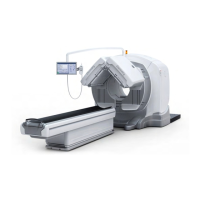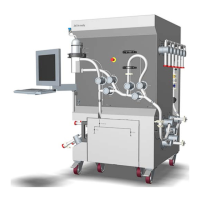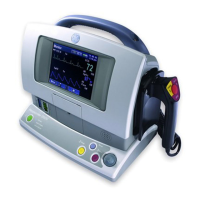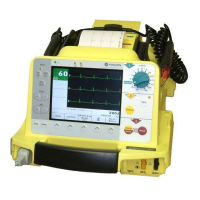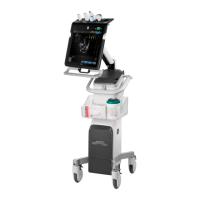Ports (default) 3002, 3003, 3004, 6386
Traffic Characterization and Bandwidth Requirements On demand, local user initiated. The bandwidth is dependent on
the local site.
Latency Max n/a
4.4 Required characteristics and configuration for network support of Revolution CT
Scanner specifications
The network must meet the specific requirements above for all traffic flows associated with the
subset of features, use cases and workflow required by the responsible organization’s users.
In addition, the network must be “flat” (limited to a single IP broadcast domain).
4.4.1 Remote Host Parameters
You access the Configure Network Hosts window by clicking the Network Settings icon on
the File Manager control bar. You can also view the configured remote networks from the
Source
menu above the Exam List in File Manager.
•
Host Name: The name given to the network node of the currently selected node. This name
is typically entered by the service engineer.
•
Display Name: The name that is shown in both the source menu and Archive and Network
destinations.
•
IP Address: The location of the node within the network. You must enter the IP (Internet
Protocol) address correctly or the connection cannot be made. Your service engineer can
help you determine the IP address.
•
Port: A predetermined number specific to the type of host and the protocol used. Your
service engineer can provide you with this number.
•
AE title: This title is provided by the service engineer.
•
Comments: A space to enter text that is associated with the selected node.
4.4.2 Archive Node Settings
Select the Archive Node option to place the selected node in the Archive destinations. Only
devices or nodes that have this option checked can be used as an archive device. Not all hosts
can be used as archive nodes (for example, another CT system cannot be used as an archive
node, but a PACS system can be used as an archive node).
To be a successful archive node, the node must meet certain DICOM requirements so that
when the data is transferred from the host system to the node, the DICOM handshake can be
successful. This is not necessary for networking images. The same handshake is not required.
The storage commitment host details are populated from the selected Remote Host Information
area. These fields can be edited.
4.5 Network Compatibility
The BrightSpeed Series, LightSpeed QX/i, Plus, Ultra, RT, RT
16
, Xtra, Pro
16
, Pro
32
, VCT, Optima
CT660, Optima CT520, Optima CT540, Optima CT580, Discovery CT590, Discovery™ CT750
HD and Revolution CT image formats are DICOM. This image format may only be transferred
Revolution CT User Manual
Direction 5480385-1EN, Revision 1
644 4 Network
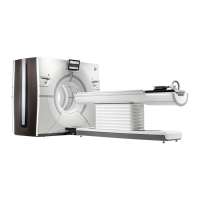
